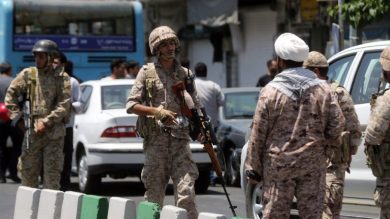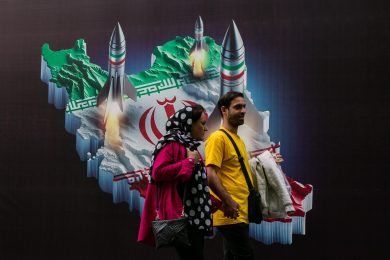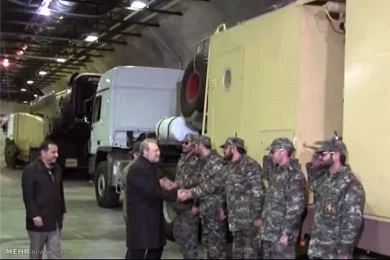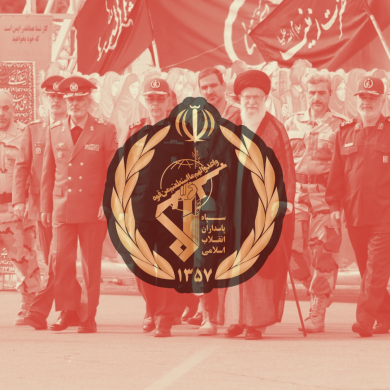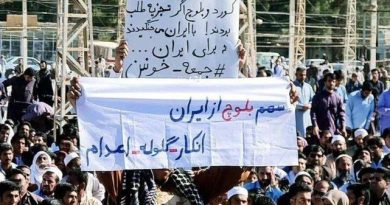In a country where speaking out can lead to imprisonment or death, Iranian women are rewriting the rules of resistance—online. As the Islamic Republic, backed by the oppressive reach of the Islamic Revolutionary Guard Corps (IRGC), cracks down on street protests, dress codes, and free expression, a new front of defiance has emerged in the digital world. Women are using smartphones, social media platforms, and encrypted communication tools to expose abuse, connect with the world, and continue the fight for justice, dignity, and freedom.
This update examines the critical role of digital activism in Iran’s women-led resistance, highlighting:
• How women are using online platforms to protest.
• The regime’s methods of cyber suppression.
• Key digital campaigns and their impact.
• Why digital resistance is shaping Iran’s future.
• What the global community can do to help.
1. The Rise of Iran’s Digital Resistance
A. The Birth of a Movement Online
The internet has become the most powerful tool in the hands of Iranian women. When Mahsa Amini was killed in September 2022 by the morality police for allegedly not wearing her hijab “properly,” the first images of her unconscious body in a hospital were posted online. Those viral images were the spark that ignited a nationwide uprising.
From that moment forward, digital spaces became the battleground—not just for organizing protests, but for telling the truth that state-run media would never reveal.
B. Smartphones as Tools of Freedom
In a highly censored society, Iranian women use their phones to:
• Film abuse by security forces.
• Share live protest videos.
• Connect with journalists abroad.
• Organize flash protests to avoid mass arrests.
• Spread news and updates faster than the regime can control.
2. The IRGC’s Cyber Warfare Tactics
The IRGC views the internet as a threat to its power—and for good reason. Iranian women have successfully turned digital tools into instruments of truth, mobilization, and accountability. In response, the regime has ramped up its cyber warfare, including:
A. Internet Blackouts
During mass protests, the regime shuts down the internet, especially in protest hotspots. This is a deliberate tactic to prevent:
• Real-time documentation of state violence.
• Coordination between protestors.
• Communication with the outside world.
B. Online Surveillance and Arrests
The IRGC uses advanced surveillance software to monitor:
• Social media posts.
• Encrypted messaging apps.
• Email and online activity.
Many women have been arrested for posting hijab-free selfies or criticizing the regime online. These arrests are often followed by forced confessions, torture, and imprisonment.
C. Disinformation and Digital Propaganda
The regime also floods social media with fake accounts to:
• Spread misinformation.
• Discredit activists.
• Promote state narratives.
These bots and trolls attempt to drown out genuine voices and confuse the public.
3. Voices of Digital Courage
A. Masih Alinejad and #MyStealthyFreedom
One of the most prominent digital activists, Masih Alinejad, launched the #MyStealthyFreedom campaign, encouraging Iranian women to share photos without hijab. This campaign evolved into a broader movement that:
• Exposed the brutality of hijab enforcement.
• United women across ideological and geographic lines.
• Reached millions globally, putting pressure on the regime.
B. #WomenLifeFreedom
This hashtag has become a global symbol of resistance. Women across Iran use it to:
• Tell their stories.
• Share videos of protests and police violence.
• Connect with global movements.
It is not just a slogan—it is a declaration of agency, identity, and power.
C. Anonymous Activists on Encrypted Apps
Thousands of Iranian women, who may not be public figures, risk everything by:
• Operating anonymous Telegram channels.
• Sharing protest schedules.
• Coordinating medical help for injured protesters.
Their invisible work is often the backbone of real-time resistance.
4. The Power of Storytelling and Global Awareness
Iranian women have learned to harness digital storytelling as a weapon of resistance. In the absence of free press, their own voices have become the news.
A. Firsthand Testimonies
From behind their screens, women have:
• Described torture in prisons.
• Named IRGC officers involved in abuses.
• Documented injuries and killings.
These accounts break through state censorship and fuel global outrage.
B. Global Reactions to Digital Evidence
The international community has responded to digital evidence by:
• Condemning the regime’s brutality.
• Imposing targeted sanctions on IRGC commanders.
• Passing resolutions in parliaments recognizing the repression of women in Iran.
5. Youth and Gen Z: Digital Natives of Revolution
Iran’s Gen Z—the youngest and most digitally literate generation—is especially instrumental in this movement:
• They are tech-savvy, rapidly adapting to censorship circumvention tools.
• Many use VPNs, proxy servers, and even satellite internet to stay connected.
• Their videos, art, and memes have kept the spirit of the movement alive, even when streets are quiet.
Their fluency in both digital tools and global culture makes them a powerful bridge between Iran and the rest of the world.
6. The Regime’s Fear: Why the Internet Terrifies the IRGC
The IRGC’s obsession with controlling the internet stems from:
• Loss of narrative control: Iranian women are exposing the regime’s lies in real time.
• Uncontainable mobilization: Protesters can organize without centralized leadership.
• Global accountability: The world sees every act of brutality—live.
This is why the regime tries so hard to regulate, restrict, and criminalize online activity. It understands that a woman with a phone is as dangerous as one with a megaphone.
7. The Role of the Iranian Diaspora
Iranian women in exile play a vital role in:
• Amplifying content from inside Iran.
• Translating and disseminating real-time updates.
• Lobbying governments and international organizations.
Activists like Roya Hakakian, Shirin Ebadi, and Hoda Katebi have used their platforms to draw global attention and build international pressure.
8. What the World Can Do
To support digital resistance led by Iranian women, the global community must:
A. Expand Internet Access
• Tech companies can provide access to secure tools and offer free VPN services.
• Satellite internet projects, like Starlink, should prioritize support for Iranian activists.
B. Protect Digital Rights
• Governments must condemn digital censorship.
• Push for resolutions in international bodies to classify internet shutdowns as human rights violations.
C. Fund Grassroots Digital Movements
• Provide grants to digital activists, independent journalists, and tech developers building censorship-resistant platforms.
• Support education programs that train women in cybersecurity and digital activism.
9. Challenges Ahead
While digital resistance is powerful, it faces serious risks:
• Constant surveillance puts activists and their families in danger.
• The regime’s cyber capabilities are growing, including the use of AI and facial recognition.
• Fatigue, trauma, and exile threaten the sustainability of resistance.
Still, despite these dangers, Iranian women persist.
Conclusion: The Internet Is Her Weapon
In the face of brutal repression, Iranian women have turned to the internet as a space of truth, connection, and hope. They have shown that even under the tightest surveillance and censorship, resistance finds a way.
Join Our Newsletter!
Stay informed with the latest updates, news, and ways to take action in the fight for justice and global security. Sign up now to get updates delivered straight to your inbox!

